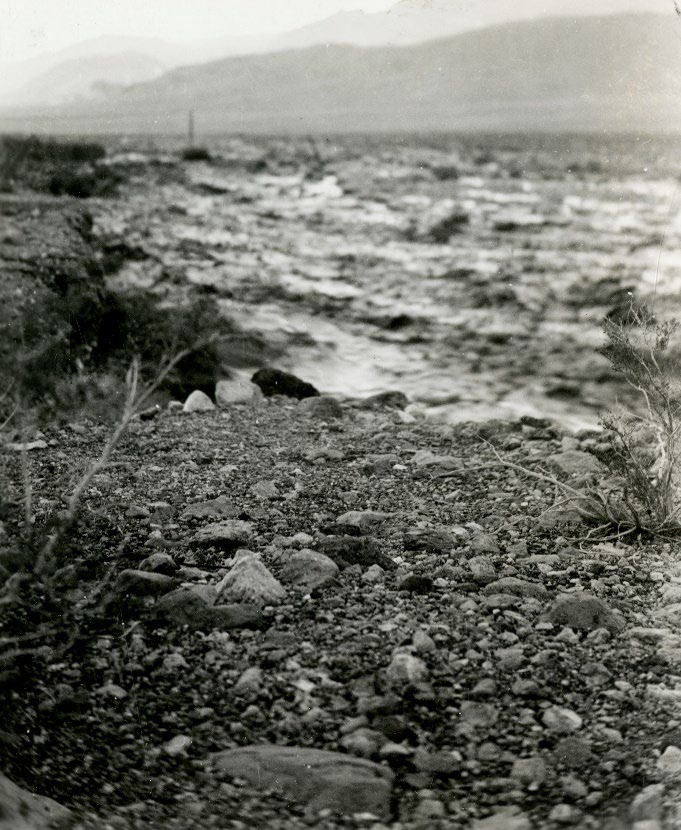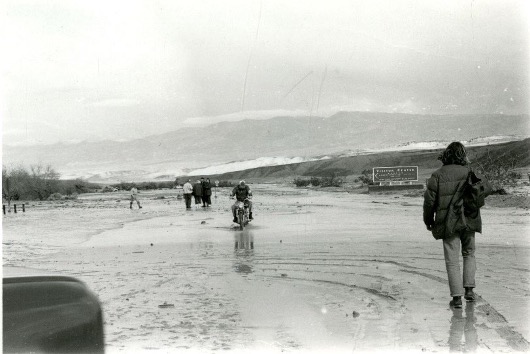
Flooding has always been part of Death Valley’s history. While the water is always needed, the damage can range from minor inconvenience to devastating natural disaster. Death Valley is still recovering from the 2015 flood that famously hit Scotty’s Castle. Within a year of Death Valley National Monument’s establishment in 1933, the park service began to experience floods and the management challenges they presented. Below is an image of acting first superintendent, Colonel John White, inspecting flood damage in 1934.


There were major floods in 1934, 1935, 1936, and 1938. Floods continued to cause sweeping damage across the National Monument. The Amargosa River flooded large sections of the park’s new roads, and sometimes even major features would flood. To the right is an image of the “salt pools” at Devil’s Golf Course.
A few sets of old borax wagons used to sit out in front of the Death Valley Inn until they were washed out by various floods, including a 1942 flood. Wagons were then moved to Death Valley Ranch’s Borax Museum after the original borax building was moved to the Ranch in 1954.
Over the years, the roads and structures along the roads became more established and were able to withstand flooding, to a degree.



